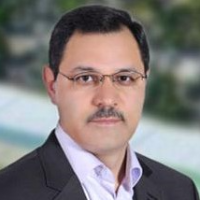An Experimental Investigation of Homogeneous Embankment Dams Overtopping Breach Hydraulic Results by Different Scenarios
Experimental investigation of embankment dams due to overtopping breach is a remarkable subject because it is the most possible failure reason, and it includes a complicated process. The mentioned phenomenon physical modeling has performed at energy ministry water research institute, hydraulics laboratory, and its hydraulic outputs compared with a benchmark model outcome in three scenarios framework. The results reveal that the breach process of physical models comprises three stages: i.e., initiation, development, and the end. Also, the development time is longer than that of the other stages. In first scenario, when shell gradation varied from 0.5mm to 1.7mm, 26 percent of peak discharge increased and 14 percent of breach time decreased. In second scenario in which lake water level maintained at overtopping threshold for two hours (for more saturation), 15 percent of peak discharge and 14 percent of breach time declined. In third scenario where the primary breach groove did not excavate, the highest difference in comparison with benchmark model results occurred, when 34 percent of peak discharge grew and 24 percent of breach time reduced. Moreover, asymmetrical sedimentation pattern happened in the last scenario. The Calculation of eroded material volume and mass was sedimentation pattern determination harvest. Herein, the simultaneous measurements of breach geometry, flow hydrograph, and final sedimentation pattern are the research unique achievements. However, further acquired analysis would be influential for the embankment dam's failure phenomenon management.
-
Study of Transverse Flows and Secondary Currents in Compound Meandering Channel under the Effect of Building Arrangements
Mohammad Naghavi, *, Ghorban Mahtabi
Journal of Hydraulics, Winter 2025 -
A Prediction of Manning Coefficient in Compound Channels with Converged and Diverged Floodplains using GMDH Model
Sajad Bijanvand, *, Abbas Parsaie
Journal of Hydraulic Structures, Winter 2024


